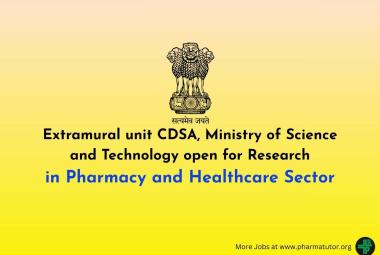About Authors:
Prakash Bansode*1, Vidhin Kamble2, Raghunath Shinde1
1Department of Chemistry,
2Department of Zoology,
Sangola College, Sangola Dist.-Solapur(M.S.)
*bansode.prakash4@gmail.com
ABSTRACT
The pesticides especially organochlorines are known for their easy bioaccumulation and persistence in living systems. They are prepared on commercial scale and consumed on large amounts. In India agriculture is the backbone of economy and mean of livelihood for people living in villages. The draugthtprone areas of Maharashtra are famous for horticultural practices such as pomegranate and ber.In order to control crop pest and to improve crop yield, various synthetic agrochemicals like pesticides, fertilizers, insecticides and phytoharmones are used on large scale. Many developed countries have banned some lethal, bioaccumulative and persistence pesticides but they are still used in drought prone areas of Maharashtra and have caused severe acute and chronic health hazards to the farmers and agricultural laborers. The present investigation was carried out to examine pesticide practices in drought prone areas and related hazards due to exposure to the organochlorine and organophosphorous pesticides.
REFERENCE ID: PHARMATUTOR-ART-1801
INTRODUCTION
The production of pesticides started in India in 1952 with the estimates of a plant for the production of BHC, an organochlorine pesticide near Calcutta and now India is second largest manufacture of pesticides in Asia after China and ranks twelfth globally (Mathur 1999).The crop improvement and pest management are two the integral parts of agriculture. The term pesticide covers a wide range of chemical compounds of natural or synthetic origin such as insecticides, herbicides, rodenticides, acaricides, fumigants etc.
In India agriculture contributes 18% of GDP and 65% of workforce derives livelihood from agriculture while 56.6% population is engaged in agricultural and horticultural activities.
And are therefore, exposed to the pesticides(Anonymous 2002).During Green Revolution high yield giving varieties of various crop plants were introduced into farming system to raise productivity. These crop varieties were more susceptible to plant pests and diseases led to the intense use of synthetic pesticides. Indiscriminate use of pesticides has recently become a matter of public concern in India. Pesticides entre into human body through the routes of inhalation, ingestion and via skin penetration and cause acute and chronic health problems like eye irritation, excessive salivation, headache and chronic diseases like cancer, reproductive and developmental disorders(Yassi et al 2001).
METHODOLOGY
Studies were conducted in drought prone areas of Solapur district of Maharashtra which are dense pomegranate yielding pockets.
DATA COLLECTION
The questionnaires were designed and pesticide applicators were interviewed during early seasons of pesticide spraying in pomegranate fields.
RESULTS AND DISCUSSION
Our study revealed that many highly hazardous organochlorine and organophosphorous pesticides like phorate, monocrotophos, endosulphan, DDT which are restricted or banned in many developed countries were still used in large amounts in study region(WHO 2004).The most commonly used pesticides according to sprayers are dimitioate, phorate, endosulphan, quinolphos, docofol, carbaryl, nuval, cypermethrin, endotaf, asataf and malathion etc.
Most of the farmers are found to suffer from ophthalmic disorders including burning of eyes and blurred vision while some farmers reported cutaneous disorders like skin redness. Many active sprayers reported that they are suffered from respiratory diseases such as running/burning nose, sore throat, shortening of breath, cough, asthma, chest pains and burnings in chest on prolonged contact during the spraying hours. Some other sign and symptoms which are self reported by the horticultural laborers are excessive salivation, vomiting, nausea, stomach pain and diarrhea.
Organochlorine pesticides cause congenital deformities of hands and feet, liver cancer, brain tumors (Quijano 2002).Adverse effects of central nervous system are typical due to poisoning of organophosphorous pesticides(Kiefer 1997). Organophosphorous pesticides are cholinesterase inhibitor and their long term exposure may lead to cancer (Mc Connell and Magnotti 1994; Wessling et al 2002).
CONCLUSION
Many hazardous pesticides having restriction or ban in many developed countries are still used in drought prone areas of Maharashtra by pomegranate growers. If the sign and symptoms of pesticide poisoning in farmers are not identified and treated at earlier stages may lead to chronic diseases. Farmers should be provided with training about proper handling of hazardous pesticides by frequently organizing training camps. There is strong need to generate awareness among pomegranate growers about judicial use of hazardous pesticides. The hazards could be minimized by wearing safety gears while spraying. Farmers should be encouraged to undertake organic farming or use eco-friendly products for pest control.
REFERENCES
- (2002). Govt. of India Tenth five year plan 2002-2007. Planning Commission of India, NEW DELHI, pp. 513-566
- Keifer, M. (1997). Human health effect of pesticide. Occup. Med. Assoc., 31:182-185
- Mathur, S.C. (1999).Future of Indian pesticide industries in next millennium. Pesticide information; 24(4): 9-23
- Mc Coneell, R. and Magnotti, R. (1994) Screening for insecticide over exposure under field conditions; a revaluation of the tintometric cholinesterase kit.Am.J.Public Health.84:479-481.
- Quijano, R.F. (2000).Risk assessment in a third world reality : an endosulphan case history.Internat.J.Occup.Environ.Health; 6(4): 312-317
- Wessling,C.,Keifer,M. and Ahlbom,A. (2002).Long term neuro-behavioral effects of mild poisoning with organophosphorous and methyl carbamate pesticides among banana workers Internat.J.Occup. Health; 8: 27-34.
- WHO,(2004).World Health Organization ISBN.92-4-154663-8. who.int/ipcs/publications/pesticides-hazard/en/.
- Yassi,Y.Kjellstorm,T.,Kok.T.K. and Gudothi,T.L. ,(2001).Basic Environmental Health, World Health Organization,Oxford University,Press.
NOW YOU CAN ALSO PUBLISH YOUR ARTICLE ONLINE.
SUBMIT YOUR ARTICLE/PROJECT AT articles@pharmatutor.org
Subscribe to Pharmatutor Alerts by Email
FIND OUT MORE ARTICLES AT OUR DATABASE









